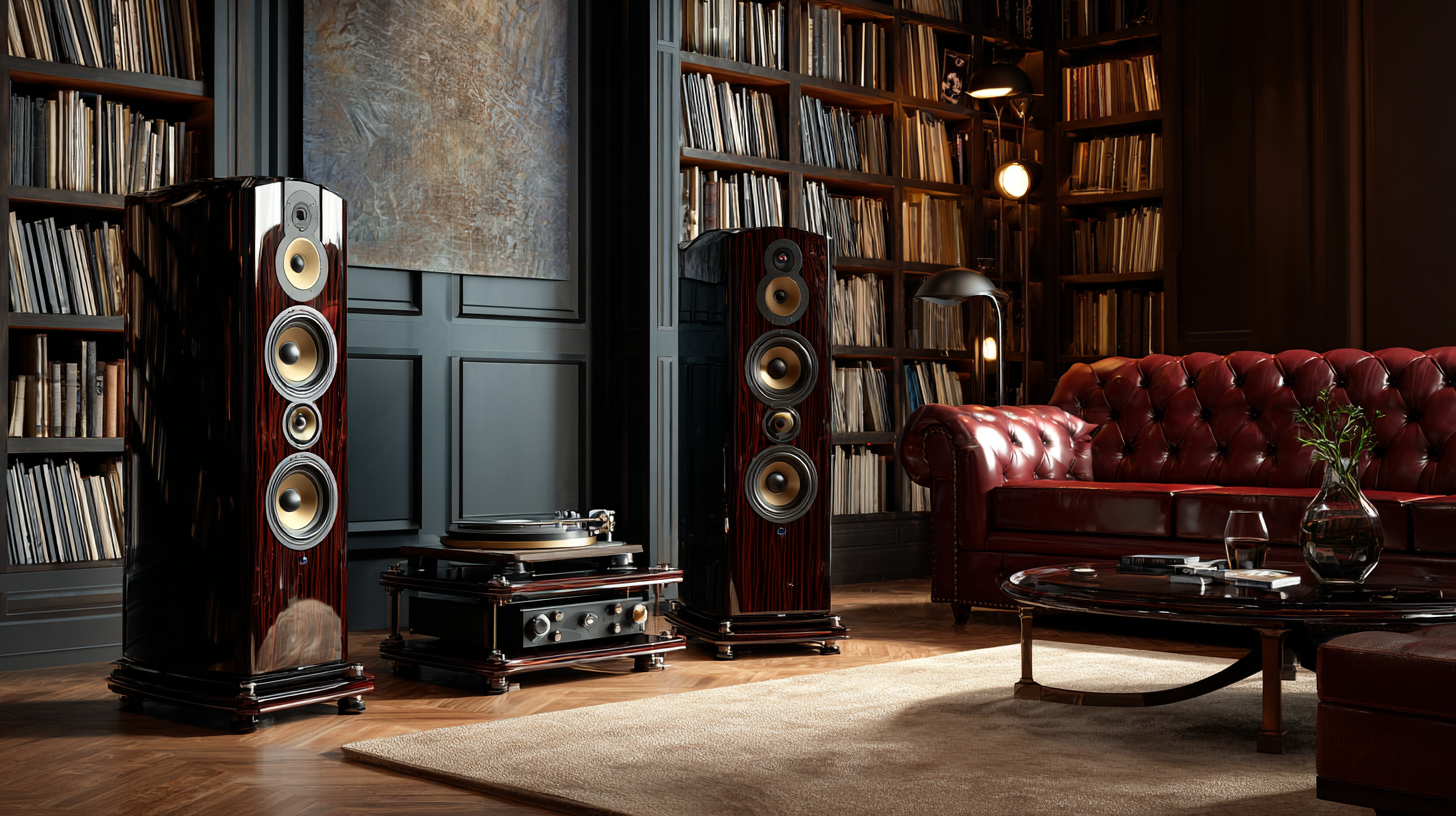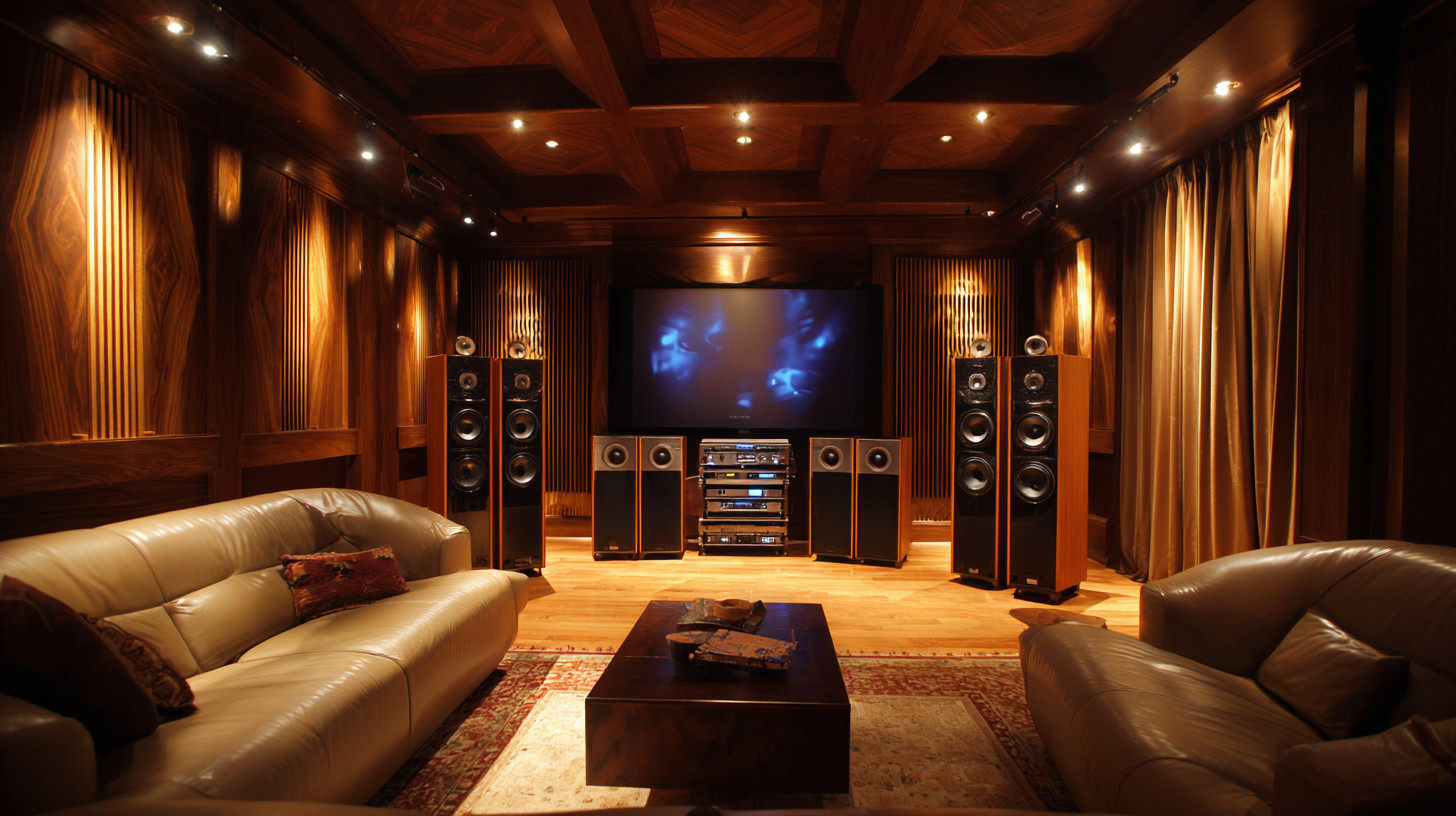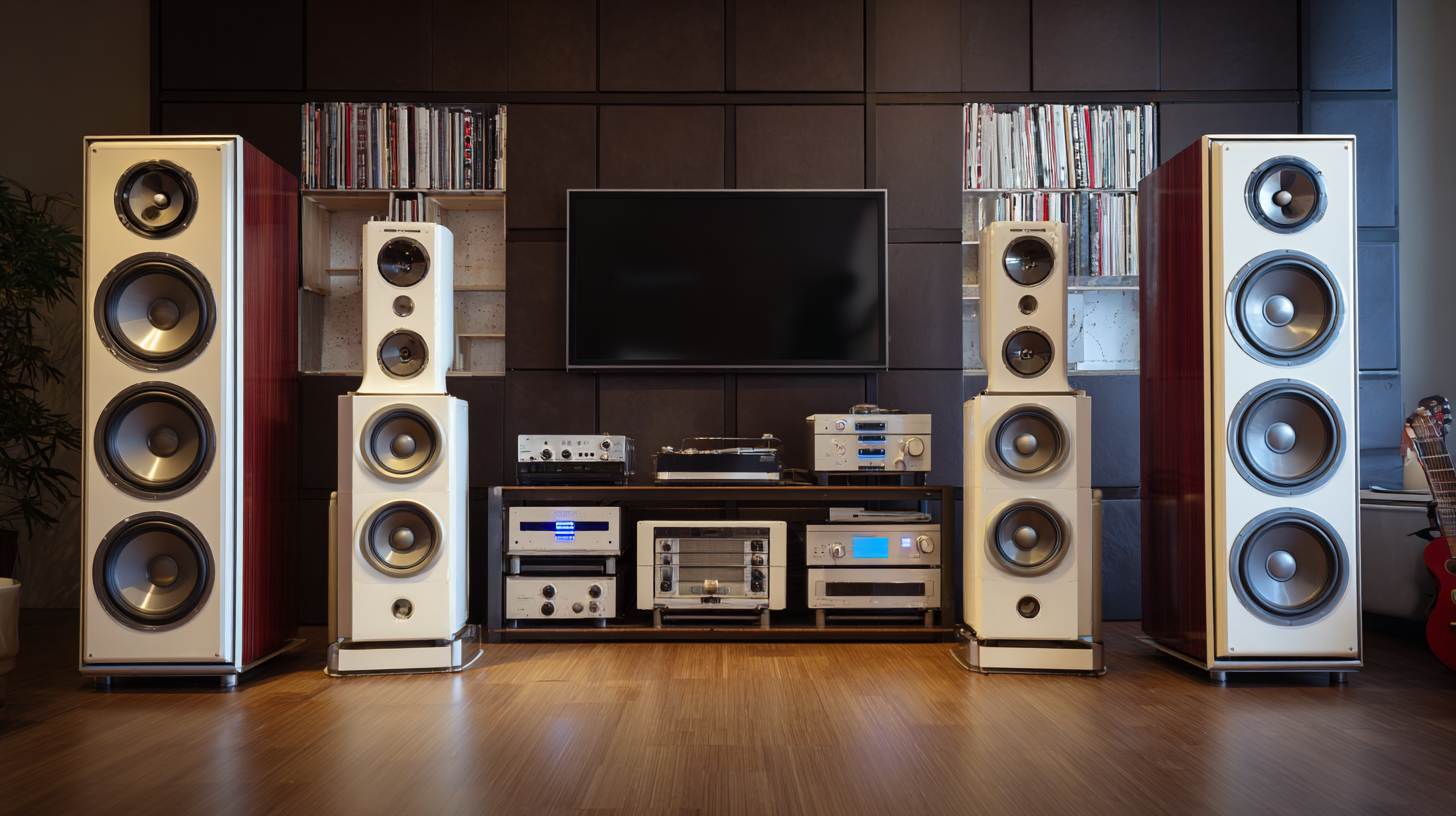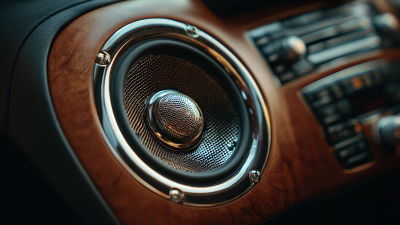Transform Your Home Entertainment: The Ultimate Guide to Choosing the Perfect Audio System
In today’s fast-paced digital age, the audio system is no longer merely an accessory; it has become a fundamental part of the home entertainment experience. According to a report by MarketsandMarkets, the global home audio equipment market is projected to reach $39.5 billion by 2025, growing at a CAGR of 7.1% from 2020 to 2025. Consumers increasingly seek high-quality sound solutions that cater to their unique preferences, whether for immersive movie experiences or crisp music playback. As streaming services and content become more sophisticated, the demand for an optimal audio system that complements modern entertainment setups has surged. This ultimate guide will navigate you through the complexities of selecting the perfect audio system, ensuring that your home entertainment evolves to meet contemporary audio standards and personal tastes.

Understanding Your Space: Analyzing Room Acoustics and Setup
When transforming your home entertainment experience, understanding your room’s acoustics is crucial. The dimensions, shape, and materials of your space significantly impact sound quality. For instance, rooms with hard surfaces, such as hardwood floors and bare walls, can create echoes that distort audio clarity. Conversely, soft furnishings, like carpets and curtains, can absorb sound, reducing unwanted reverberation and enhancing auditory precision. Evaluating these elements allows you to identify the best position for your audio system, tailoring your setup to the unique characteristics of your environment.
Analyzing room setup goes beyond just placement; it also involves considering speaker type and configuration. For optimal performance, speakers should be positioned to create an equilateral triangle with your main listening area. This setup maximizes the stereo image and spatial awareness of sound. Additionally, experimenting with different placements can yield surprising improvements. For example, raising speakers to ear level and avoiding corners can help avoid muddiness in sound. By thoughtfully assessing both the acoustics and configuration of your space, you can create a more immersive audio experience tailored to your home environment.

Identifying Your Needs: Defining the Purpose of Your Audio System
When selecting the perfect audio system for your home, the first step is to identify your needs and define the purpose of the system. Are you looking to create an immersive movie experience, or is your focus on high-fidelity music listening? According to a report by the Consumer Technology Association, 55% of U.S. households now prioritize audio quality when purchasing entertainment systems, highlighting the growing demand for tailored audio solutions that cater to specific user preferences.
Tips: Consider your primary use case—whether for casual listening, serious audiophile experiences, or home theater setups. This will help narrow down your choices significantly. Understanding your environment is also crucial; a larger room may require a more powerful audio system, while smaller spaces can often benefit from versatile, compact speakers.
Furthermore, think about the integration of smart technology within your audio system. Recent studies reveal that 41% of consumers prefer systems that seamlessly integrate with their smart home devices. This ensures not only convenience but also enhanced control over your audio experience, allowing you to enjoy music or soundtracks effortlessly at the mere command of your voice.

Exploring Different Types of Audio Systems: Components and Features
When it comes to transforming your home entertainment setup, understanding the different types of audio systems and their components is crucial. Audio systems can range from simple stereo setups to complex multi-channel surround sound systems, each offering unique features tailored to various listening experiences. A basic stereo system, comprised of two speakers and an amplifier, is ideal for casual listeners seeking clarity and balance. Conversely, advanced setups may incorporate subwoofers, equalizers, and network streaming capabilities to cater to audiophiles who demand a richer and more immersive sound profile.
Furthermore, the latest advancements in audio technology emphasize the importance of sustainability, with innovations like piezoelectric nanogenerators enabling acoustic energy harvesting. This approach can provide a greener way to power sound systems, especially in portable or compact formats. Moreover, modern audio systems are increasingly equipped with smart features that allow seamless integration with smart home environments, enhancing user convenience. Understanding these components and features will empower consumers to make informed decisions, ultimately tailoring their home entertainment experience to their specific needs and preferences.
Budgeting Smartly: Balancing Cost with Quality for Your Audio Setup
When it comes to transforming your home entertainment, budgeting smartly is crucial. Recent studies by the Consumer Technology Association indicate that household spending on audio systems has increased by over 25% in the past two years. However, this does not mean you must break the bank to achieve high-quality sound. Prioritizing your audio needs, such as whether you prefer immersive surround sound or a simple stereo setup, can greatly influence your budget allocation.
**Tips:** Start by setting a realistic budget and stick to it. Research different brands and models that fit within your price range, and consider refurbished options that often come with warranties. Another effective strategy is to invest in key components—like speakers or an amplifier—first and build your system gradually. A well-balanced audio setup can often be achieved for under $1,000 if you choose wisely.
Investing your dollars in reliable brands known for quality sound performance rather than trendy aesthetics can also make a substantial difference. According to the Audio Engineering Society, products from established manufacturers often provide better longevity and sound quality, making them a smart choice for budget-conscious audiophiles.
Audio System Budgeting: Cost vs. Quality Analysis
Future-Proofing Your System: Choosing Upgradable and Compatible Equipment
When it comes to setting up an exceptional home audio system,
future-proofing your equipment is essential.
You want to invest in technology that not only meets your current needs but can also evolve as new innovations emerge.
This involves selecting components that are easily upgradable and compatible with a variety of systems.
Look for audio systems that incorporate modular designs, allowing for straightforward upgrades of speakers, receivers, or amplification.
Tips:
Always check for compatibility with popular streaming services and protocols like Bluetooth, Wi-Fi, and HDMI ARC to ensure seamless integration with your devices.
Additionally, consider systems that offer firmware updates to enhance functionality over time, keeping your system relevant without needing a complete overhaul.
Don’t forget about the importance of scalability.
Choosing equipment from brands that offer a range of products can make it easier to expand your system as your audio needs grow.
This could mean adding surround sound speakers for a true cinematic experience or integrating smart home features for enhanced control and convenience.
Tips:
Invest in a receiver that supports the latest surround sound formats and multiple input options to accommodate any future device you might acquire.
This approach will save you both time and money while allowing you to enjoy high-quality audio for years to come.
Related Posts
-

Transform Your Nautical Adventures with the Best Marine Audio Systems of 2023
-

How to Enhance Your Driving Experience with Apple Car Stereo Systems
-

Transform Your Ride: The Ultimate Guide to Choosing the Best Car Multimedia Player in 2023
-

How to Choose the Perfect Car Speaker: Insights from 2023 Audio Technology Trends
-

Driving Innovation in Car Stereo Installation Trends at the 138th Canton Fair 2025
-

Unlocking Opportunities: Car Electronics Trends at the 138th Canton Fair 2025 in China
Footer

Hours
| Sunday | CLOSED | |
| Monday | 9AM-12PM | 1PM-6PM |
| Tuesday | 9AM-12PM | 1PM-6PM |
| Wednesday | 9AM-12PM | 1PM-6PM |
| Thursday | CLOSED | |
| Friday | 9AM-12PM | 1PM-6PM |
| Saturday | 10AM-12PM | 1PM-6PM |
Please note that we are closed for lunch from 12PM-1PM daily.
Contact Us
Leave us a Review!
Our Services
- Car Audio
- Car Alarms
- Mobile Video
- Remote Car Starters
- Navigation Systems
- Backup Camera Installation
- Apple CarPlay Installation
- Android Auto Installation
- Device Integration
- Key Fob Programming
- Interlock Installation
- HID Headlights
- LED Headlights
- Underglow Lighting
- Marine Audio
- Custom Fabrication
- Custom CNC Machining Services
- Mobileye Installation Services



